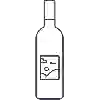
Winery Johann MichelCuvée Jana
In the mouth this red wine is a powerful with a nice balance between acidity and tannins.
This wine generally goes well with poultry, beef or game (deer, venison).
Taste structure of the Cuvée Jana from the Winery Johann Michel
Light | Bold | |
Smooth | Tannic | |
Dry | Sweet | |
Soft | Acidic |
In the mouth the Cuvée Jana of Winery Johann Michel in the region of Rhone Valley is a powerful with a nice balance between acidity and tannins.
Wine flavors and olphactive analysis
On the nose the Cuvée Jana of Winery Johann Michel in the region of Rhone Valley often reveals types of flavors of oaky, blackberry or vanilla and sometimes also flavors of leather, black currant or non oak.
Food and wine pairings with Cuvée Jana
Pairings that work perfectly with Cuvée Jana
Original food and wine pairings with Cuvée Jana
The Cuvée Jana of Winery Johann Michel matches generally quite well with dishes of beef, lamb or poultry such as recipes of wild boar with honey, baekenofe (alsatian meat stew) or blue cord.
Details and technical informations about Winery Johann Michel's Cuvée Jana.
Discover the grape variety: Syrah
No one can agree on the origin of Syrah, the black grape variety found today in the Rhône Valley, Provence, Languedoc-Roussillon and southwestern France. Several legends speak of its possible origin in Sicily, Persia or Syria. Tests have finally revealed that it originated in the northern Côtes du Rhône valley. Syrah is a fragile grape variety, which fears drought and is susceptible to disease. Its long shoots are not very resistant to the mistral, which is why they are often tied up or cut short. It needs soil rich in trace elements to feed itself. In these conditions, it produces bunches of beautiful bluish-black grapes with medium-sized berries and sweet, spicy juice. Its red wines are deep in colour, with fruity, spicy and floral aromatic complexity and tannins that structure the whole. With little acidity, they are rather full-bodied and have a high alcohol content. Syrah also makes fruity rosé wines, which are pleasant and have a nice finesse.vinified on its own, Syrah is the only red grape variety of the AOC Cornas and is the majority in the AOC Côte-Rôtie and Hermitage. It is also recommended in the Côtes-du-Vallée du Rhône, Saint-Joseph and Châteauneuf-du-Pape appellations. Finally, the AOCs Palette, Baux-de-Provence, Corbières, Côtes-du-Roussillon, Fronton... also produce it. Today, Syrah is a grape variety that is constantly increasing in surface area throughout the world. It is growing in Italy, Australia, South Africa, Argentina and Mexico.
Last vintages of this wine
The best vintages of Cuvée Jana from Winery Johann Michel are 0
Informations about the Winery Johann Michel
The Winery Johann Michel is one of of the world's greatest estates. It offers 7 wines for sale in the of Cornas to come and discover on site or to buy online.
The wine region of Cornas
The wine region of Cornas is located in the region of Rhône septentrional of Rhone Valley of France. Wineries and vineyards like the Domaine Thierry Allemand or the Domaine Thierry Allemand produce mainly wines red and white. The most planted grape varieties in the region of Cornas are Mourvèdre, Roussanne and Viognier, they are then used in wines in blends or as a single variety. On the nose of Cornas often reveals types of flavors of earthy, cream or citrus fruit and sometimes also flavors of perfume, sour cherry or lavender.
The wine region of Rhone Valley
The Rhone Valley is a key wine-producing region in Southeastern France. It follows the North-south course of the Rhône for nearly 240 km, from Lyon to the Rhône delta (Bouches-du-Rhône), near the Mediterranean coast. The Length of the valley means that Rhône wines are the product of a wide variety of soil types and mesoclimates. The viticultural areas of the region cover such a distance that there is a widely accepted division between its northern and southern parts.
The word of the wine: Smoked white
See sauvignon.












